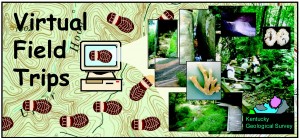~Embodied Learning +++
I was really interested in learning more about how haptics can enhance education in science so this was my exploration focus.
Haptics=happening

So much potential! This video is amazing.
Haptics refers to our sense of touch and is a non verbal method of communicating that is tactile involving vibrations, motion or forces. Haptics are to touch what computer graphics are to vision. Thus, there is real potential for haptics to enhance learning and amplify opportunities for certain learning style preferences. Haptics in education can involve specialized models, simulators, control systems, and devices that enable compelling touch-based interaction with computers. It is about incorporating manipulatives that can aid sensory perceptions and are especially useful for learning and developments in nanoscience as well as key physics, biology and chemistry concepts. Williams (2003) explain how haptic interfaces allow humans to generate a sense of touch and force from a virtual model which can lead to more powerful learning experiences. Haptics can allow students to literally ‘feel’ the scientific concepts they learn about creates blended learning opportunities. They use haptics augmented simple machine activities in their study and determined that this did improve learning.
This is so cool! Making models via technological haptics.

Pedagogical Affordances of Haptics
In their literature review Minogue & Jones (2006) ask some important questions: is it possible to know something more completely by touching it? Does involving the sense of touch enable one to construct a more connected and meaningful understanding? Can augmenting existing experiential, embodied, and tactile knowledge instruction with touch exploit that which might not otherwise be called upon? They also discovered that there was a lack of research on haptics’ influence on learning. However, one study they looked at by Reiner (1999) found that haptic devices could be interfaces that promote the use of kinesthetic knowledge to support the generation of more accurate mental models. Jones et al (2006) highlight that haptic software enables learners to interact with computer visualizations in a more immersive learning environment. When the tool involves more than just vision or just touch it is multimodal. They envision that haptic experiences are essentially hands on opportunities involving an active discovery sense: touch. These tactile experiences also have the potential to reduce cognitive load ie. if we use multiple modalities we use more senses and therefore can reduce cognitive load. I found it interesting to learn that haptic technologies can involve both “force feedback (simulating object hardness, weight, and inertia) and tactile feedback (simulating surface contact geometry, smoothness, slippage, and temperature).” (Jones et al, 2006, p.3). Their studies found that students who employed haptic technologies were more highly engaged and interested in the tools, with a higher interest and participation rate . Ultimately, the use of haptic devices leads to embodied learning. Reiner (1999), who investigated the function of tactile perception in conceptual construction of forces and fields, projected “that this learning environment stirs up tacit embodied knowledge [and] previously untapped nonpropositional knowledge. This type of knowledge is in immediate (without the mediation of symbols and concepts) relation to objects and bodily acts.” (Jones et al., 2006, p.11). Dede et al (1999) also indicate that visualizations can minimize misconceptions so it is likely that haptics would further reduce this potential to develop incorrect mental models. Most importantly, I think, is the motivational potential of integrating haptic technology into science education and as technology improves the opportunities (and cost?) for these haptic tools to be used in science education will increase (and decrease?).
This video shows some ways haptics can be used to teach physics- friction.

How would you customize any of the mobile technologies discussed in this lesson to facilitate embodied learning or mobile learning for math or science? Explain your choices.
I think there is a lot of potential in the haptic feedback technology that exists in handheld devices- don’t press just touch! Dede et al. (1999) elaborate on how technology enhanced constructivist learning currently focuses on how representations and tools can be used to mediate interactions among learners and natural or social phenomena. They compare VRIs to Alice walking through the looking glass because VRIs enable students to immerse themselves in a different, distributed, synthetic environment where their avatar can embark on an inquiry learning journey co-constructing knowledge using simulated artefacts. The addition of haptic technology to such a VRI would involve multimodal, multisensory immersion and heighten the experience making it more real. I want to learn more about how I could use handheld devices with students to collect samples using haptic technology.
I don’t think I could customize these technologies but I would like to learn more about how to use some of the following: MOMO Racing by Logitech; Speed Force by Logitech; The Phantom by Sensible Technology; CyberGrasp by Immersion Corporation; DELTA by Force Dimension and/or Force Feedback2 Joystick by Microscoft. I believe there is a lot of potential for haptic technology to promote learning activites that cater to VAK learning preferences- multimodal learning opportunities too. Haptic perception could be used to explore friction, tension, acceleration/speed as well as physical properties of materials. Haptics could also support learners with learning needs (ie. visually impaired) immersing them and employing tactile, kinaesthetic, experiential and embodied knowledge.
References
Dede, C., Salzman, M.C, Bowen Loftin, R. B., & Sprague, D. (1999). Multisensory immersion as a modeling environment for learning complex scientific concepts. In W. Feurzeig, and N. Roberts (Eds.), Modeling and simulation in science and mathematics education (pp. 282-319). New York: Springer- Verlag.
Grow, D. Lawton N. Verner and Allison M. Okamura. (2005?). Educational Haptics. http://www.cs.hmc.edu/roboteducation/papers2007/c24_growvernerokamura_jhu_haptics2.pdf
Jones, G.M., Minogue, J., Tretter, T.R., Neigishi, A., & Taylor, R. (2006). Haptic augmentation of science instruction: Does touch matter? Science Education, 90, (1), 111-123.
Minogue, J. & Jones, M.G. (2006). Haptics in education: Exploring an untapped sensory modality. Review of Educational Research, 76(3), 317-348.
Roschelle, J. (2003). Unlocking the learning value of wireless mobile devices. Journal of Computer Assisted Learning, 19(3), pp. 260-272.
Williams II, R.L., Chen, M., & Seaton, J.M. (2003). Haptics-augmented simple-machine educational tools. Journal of Science Education and Technology, 12(1), pp. 1-12.
Winn, W. (2003). Learning in artificial environments: Embodiment, embeddedness, and dynamic adaptation. Technology, Instruction, Cognition and Learning, 1(1), 87-114.
VFTs and Real Field Trips- a cost-benefit analysis!
Is the real thing better? After I volunteered to fill in for an absent teacher on a diabolical field trip with some wild Year 8 boys (where we were asked to leave the planetarium due to their behaviourà sooooooo embarrassed) to the Scientific Museum in Kuwait I think sometimes it is better to go virtual! However, it really depends on:
· what your learning goal is
· what the timeframe is like
· accessibility to the venue
· accessibility to the internet
· possible to do both
· costs of the real field trip
· benefits of real field trips vs benefits of the VFT
· risks involved with real field trip
Field trips, real or virtual, provide an opportunity for students to interact with concepts, artefacts, ideas and make/test hypotheses through live viewing or simulations. Both offer opportunities to develop their learning community and foster collaboration – if the learning activities are designed that way. So much of this comes down to planning, mapping to curriculum and designing the learning activities around the learning goals.
Compatible with Pedagogical Frameworks? Absolutely. Really up to how the teacher designs the learning experience but VFTs and real field trips can be used with POE, T-GEM, LfU and I’m sure many other models if desired- field trips are versatile.
VFTs – the real benefit here is accessibility, they are available anytime and can be revisited. They also usually offer a number of pre-designed learning activities that can be aligned with science and maths curricula. Often they get to create an avatar which appeals to learners and makes the experience somewhat more meaningful to them. Their field trip will be engaging, pitched at their level involving interactivities where they can explore, investigate, test and play independently. A wonderful affordance of VFTs is the built-in opportunities to practice the scientific process for hard to do experiments in difficult to reach places. Use of information visualizations, knowledge representation and knowledge diffusion makes the predictions, observations and analysis of scientific phenomena more meaningful and lifelike. Sometimes there is built in feedback or opportunities to ask experts questions which can minimize misconceptions.
No contest- We don’t all live next to an active volcano or in the arctic or inside the human body so I think that VFTs win hands down. In this day and age where risk analysis and paperwork is a deterant, parent volunteers are hard to come by and costs (time and $) are sorely lacking I am so pleased that there are VFT opportunities out there. I disagree with Spicer and Stratford (who wrote their article 11 years ago!) to a certain degree: I do agree that we can use the VFT to enhance a real field trip, however, this is usually not an option. Can I go to the arctic and go on a VFT of the arctic- not in Kuwait! I think they are often two very different things. We use VFTs for those learning experiences that we would not otherwise get exposure to and keep on going to the local museum/planetarium/beach/forest/reserve every year (if only for social skills development!) to get some hands on experience.
References
Virtual Field Trips:
- Field Trip Earth http://www.fieldtripearth.org/index.xml
- Polar Bear Cam http://animals.nationalgeographic.com/animals/polar-bear-cam/
- Volcano Expedition from the field of Costa Rica http://scripps.ucsd.edu/volcano/
Drexel Island on Second Life (2007). Drexel University http://drexelisland.wikispaces.com/
Spicer, J., & Stratford, J. (2001). Student perceptions of a virtual field trip to replace a real field trip. Journal of Computer Assisted Learning, 17, 345-354.
